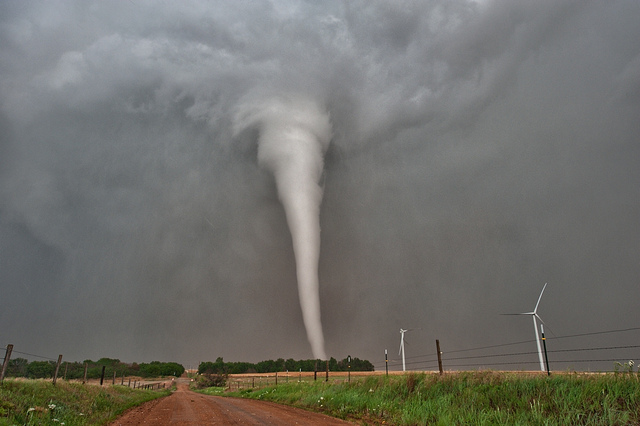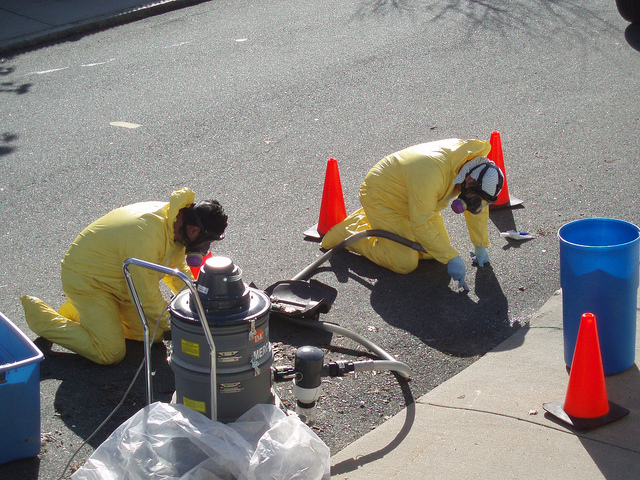Tornadoes can occur with little or no warning. Taking precautions in advance of the storms, such as developing an emergency plan, learning the warning signs, and monitoring tornado watches and warnings, can help you stay safe if a tornado occurs in your area.
Audit, Compliance and Risk Blog
Tags: Corporate Governance, Business & Legal, Health & Safety, OSHA, Training, EHS
EPA May Require Spill Prevention, Control and Countermeasure Plan
Posted by Jon Elliott on Mon, Sep 08, 2014
The Clean Water Act (CWA), as amended after the Exxon Valdez spill by the Oil Pollution Act of 1990, imposes oil spill planning requirements on onshore and offshore facilities involved in the handling and transport of oil. These facilities may be required to prepare and implement a Spill Prevention, Control and Countermeasure (SPCC) Plan (and perhaps a more detailed Facility Response Plan). During 2001-2011, EPA adopted a series of significant changes to its SPCC Plan regulations, requiring compliance by most facilities no later than November 10, 2011.
Tags: Business & Legal, Health & Safety, OSHA, Environmental risks, EHS, EPA, Underground Storage Tanks
EPA Seeks Comments On Accidental Release Prevention Requirements
Posted by Jon Elliott on Thu, Sep 04, 2014
In August 2013, President Obama issued an Executive Order directing federal regulatory agencies to review specified regulatory programs that are designed to prevent catastrophic releases of toxics: Occupational Safety and Health Administration (OSHA) Chemical Process Safety Management Standard (PSM); Environmental Protection Agency (EPA) Accidental Release Prevention (ARP) program and Emergency Planning and Right-to-Know Act (EPCRA) program; and Department of Homeland Security (DHS) Chemical Facility Anti-Terrorism Standards (CFATS) program (I blogged about the EO here, OSHA’s consideration of PSM changes here, and about one of the agencies’ joint reports on progress here). EPA has just issued a request for information on the possible revisions to ARP requirements, which are described below.
Tags: Corporate Governance, Business & Legal, Health & Safety, OSHA, Environmental risks, Environmental, EPA
Managing Confined Space—Ensuring Worker Safety in Unusual Circumstances
Posted by Melanie Powers on Wed, Sep 03, 2014
Free Webinar
Date: Tuesday, September 9, 2014
Time: 2:00 PM - 3:00 PM EDT
Free! All are welcome
Tags: Employer Best Practices, Health & Safety, OSHA, Employee Rights, Training, Environmental risks, EHS, Webinar
Production Company Cited for Safety Violations Causing Worker Injury and Fatality
Posted by STP Editorial Team on Tue, Sep 02, 2014
Tags: Corporate Governance, Business & Legal, Employer Best Practices, Health & Safety, OSHA, Employee Rights
Is your employer hiring "temp" workers this summer—to serve tourists, meet cascading production deadlines, tend crops, or maybe just to fill in while permanent workers take vacations? Most employers recognize that occupational safety and health laws throughout North America assign them an Employer's General Duty to protect their own employees from workplace hazards. Some don’t remember that this duty also applies to shared employees, and even to other employers’ employees while they’re at your workplace. This month, the US Occupational Safety and Health Administration (OSHA) is re-emphasizing ongoing efforts to ensure protections for temporary workers ("temps"), extending the Temporary Worker Initiative it started in 2013.
Tags: Corporate Governance, Business & Legal, Employer Best Practices, Health & Safety, OSHA, Employee Rights, Training
OSHA: Safeguarding Equipment and Protecting Employees from Amputations
Posted by STP Editorial Team on Mon, Jul 28, 2014
The Occupational Safety and Health Administration (OSHA) has revised a guide that identifies eight mechanical motions and eight hazardous actions that present possible amputation hazards. The guide also sets forth steps employers can take to reduce these hazards. The material is appropriate for anyone responsible for the operation, servicing, and care of machines or equipment: employers, employees, safety professionals, and industrial hygienists. Topics covered in this document include hazard analysis, awareness devices, and hazardous energy (lockout/tagout), and safeguarding machinery. An excerpt follows:
Tags: Corporate Governance, Business & Legal, Health & Safety, OSHA, California Legislation, Training
Investigation of Construction Incidents to Reduce Injuries and Fatalities
Posted by STP Editorial Team on Thu, Jul 10, 2014
The Directorate of Construction, Occupational Safety and Health Administration (OSHA) has a website that provides original investigations of collapses and other incidents. Many of the incidents resulted in one or more worker fatalities, and most of them resulted in multi-million dollar property loss, lawsuits, or settlements. Each investigation was performed at the request of an OSHA field office or State Plan OSHA as part of an enforcement inspection.
Tags: Corporate Governance, Business & Legal, Employer Best Practices, Health & Safety, OSHA, Training, Environmental risks, Environmental
It's nearly time to start worrying that outdoor work in the summer sun will lead to heat illness. The federal Occupational Safety and Health Administration (OSHA) provides some guidance to employers and their workers, while the Sun Belt California's Division of Occupational Safety and Health (Cal/OSHA) administers detailed regulatory requirements promulgated under state law. If you have outdoor workers in California you must comply with the following requirements, while if you're anywhere else you should at least consider them.
Tags: Corporate Governance, Business & Legal, Employer Best Practices, OSHA, Employee Rights, California Legislation, Environmental risks, Environmental, EHS, EPA
News from The Bureau of Safety and Environmental Enforcement (BSEE) Press Release Issued April 3, 2014
Tags: Corporate Governance, Business & Legal, SEC, OSHA, Environmental risks, Environmental, EHS, Oil & Gas, climate change










